MADISON — “You want them all to be red,” said Tim Cunniff, executive vice president for sales and marketing at Backyard Farms, as he indicated a cluster of cocktail tomatoes that would be in the stores within the month. He touched one tomato that already looked just right, deep red, firm and despite the longitude, latitude and a light dusting of November snow outside, alluring enough to bring on a craving for basil and mozzarella. “Without this one being ketchup,” Cunniff added. He wants that hydroponically grown cluster to arrive in customers’ homes with everything red and that first tomato he pointed to still firm, still perfect. “That’s the trick.”
Every week between 350,000 and 400,000 pounds of tomatoes leave Backyard Farm’s greenhouses, headed to stores like Hannaford, Shaw’s and Market Baskets in New England and Gourmet Garages or restaurants in New York. None spends more than 12 hours on the road and none travels farther than Maryland, where Backyard Farms has one customer.
Despite the evocative company name – the backyard being the most likely place for someone passionate about tomatoes to have first understood the greatness of the fruit – there is nothing on the packaging that boasts that these are “local” tomatoes. Cunniff said the word is too fraught, especially in this agriculture-happy region. “Each state in New England has its own definition of local,” he said. “Like in Vermont, if you’re not living next to the guy that grew it you can’t say that is local.”
So the “Maine Greenhouse Tomatoes” stamped on the box suffices.
It’s confusing though. Backyard Farms sent its first tomatoes to the market in January 2007, joining the food economy at a time when words like “local” and “sustainable” were first becoming nearly as commonplace in Maine as “lobster” and “snowplow.” But the privately owned company, headquartered in a 42-acre greenhouse in Madison, doesn’t quite fit the standard definitions of either word. It uses massive amounts of energy. It also employs 200 Mainers in an area where jobs are hard to come by.
Trucks arrive at Backyard Farms every day, taking tomatoes north but mostly south from Madison. But that also means fewer tomatoes traveling north from Mexico and Florida or east from Arizona and California. Sixty-five percent of Backyard Farm’s tomatoes, which come in three varieties (cocktail; tomatoes on the vine; and the newest, a sandwich-style beefsteak tomato called the Somerset Pink), stay in New England. These are the trade-offs, as Cunniff sees it. This is not back-to-the-land kind of sustainability, a word Cunniff calls “overused.” But: “People start talking about energy usage, and I’m not saying that’s not an issue, but we’ve got 200 full-time jobs with benefits. Decent jobs for nice people.” Backyard Farms says 46 of its original employees are still with the company, eight years into operation. “So what I would say is, refine the question,” Cunniff said. “What is important to you?”
He picks a couple of the cocktail tomatoes, pops one in his mouth and passes another over to sample. Even without salt or olive oil or any hope of seeing the summer sun for at least seven months, the Madison-grown tomato is delicious. And reliably so. As Backyard Farms’ many loyal customers would attest, this is as true in December as it is in May.
ALWAYS TOMATO SEASON
There is, however, a slogan on Backyard Farms’ cardboard boxes (easily recyclable and printed using soy-based inks by an Augusta printer): “Always Tomato Season.”
This, of course, is not technically true. Maybe in the high plateaus of Mexico, where the majority of North America’s “protected” tomatoes – grown under cover, whether full greenhouses or shade houses – are produced. But in Maine, tomato season is quite clearly August and September, give or take a few weeks. And during those months, Tim Cunniff considers himself not exactly a player in the Maine tomato scene.
“It’s like someone selling snow to Eskimos,” he said. That’s fine, though; he believes in succumbing to the powerful beauty of the purple Cherokees at any given Maine farmers market in August. “When they’re really good we want people to enjoy them,” he said. Buy them. Eat them. Admire them, he says. Even at a premium.
“You should pay for those tomatoes,” he said, because they are “ridiculously” good. “And the reason they are that good is that the farmer decided to go out on a limb with these heirloom varieties.” Maybe there’s blight or too much rain. Maybe the farmer lost half his crop. “That’s not your problem, of course, but he is asking you for a fair price for the amount of work they put into it,” Cunniff said. “It’s a labor of love, you know.”
It is Backyard Farms’ mission to make the consumer feel not so far removed from the possibility of that tomato the rest of the year. Make no mistake about the seriousness of the craving for a good tomato; the fruit trails only the potato and lettuce in terms of fresh produce consumption in America. And we all know potatoes and lettuce have the edge because of all those french fries American consume and salad bars we visit. “We try to bridge the gap through the high-quality tomato,” Cunniff said.
The man he calls the tomato whisperer, Arie van der Giessen, a third-generation grower from Holland, is in charge of that department. “Taste is No. 1,” van der Giessen said. “We don’t grow easy-growing varieties or the high-yield varieties. We grow what looks the best and tastes the best.”
This is the tomato that wins over many consumers, with the likely exception of the most hardcore locavores. You’d think that might be Elise Richer, author of the New England-themed cookbook “Always in Season,” which gives readers guidelines for how to cook in tune with the seasons. But despite knowing what an expensive environmental proposition growing greenhouse tomatoes in Maine, she doesn’t take a hard and fast position on the Backyard Farms product.
“I feel like it is really hard for people to live in a black and white world,” Richer said. “I want people to be excited about local food, not like ‘It’s some regimen I have to follow.'”
“If that’s the standard, there is going to be very little left to buy at the supermarket,” she said. For instance, citrus, which doesn’t grow in Maine. Richer buys lemons and won’t stop. “You’d have to pry those lemons from my cold dead hands.”
She won’t make her favorite tomato pie in winter. And her familiarity with Barry Estabrook’s 2011 expose on the tomato industry, “Tomatoland,” prevents her from buying Florida tomatoes for reasons ranging from ecological to humanitarian. But, if the kids want tacos in the winter? She’ll buy tomatoes for a garnish. And they will be Backyard Farms.
LONGITUDE AND LATITUDE
The American greenhouse tomato industry got started in the 1990s. Backyard Farms is a little late to the game, but is already the fifth largest greenhouse tomato-growing operation in America. In 2013 there were 1,148 total acres in greenhouse production in the United States, meaning the companies that rank 1 through 4 are much bigger, acreage wise.
Still, anyone who drives north of Madison and takes a left onto River Road to be greeted by the sight of Backyard Farms is unlikely to be thinking about numbers 1 through 4. The greenhouse is a startlingly and compelling sight: futuristic with all those clean lines, elegant, and yet there are those vines twining upward, the green shines through the glass, sending a powerful message that things are growing. Fast.
Yet at latitude 44.833109 and longitude 69.847727, this is the northernmost year-round tomato greenhouse in America. In Canada, which has about 1,500 acres of tomato greenhouses, no one grows in the winter except, apparently, one outlier in Quebec. Backyard Farms’ 42 acres of greenhouses are built on land that once held several dairy farms. It is only a stone’s throw from the shores of the Kennebec, although its rich river soil is of no matter; Backyard Farms is entirely hydroponic.
Everyone who comes to see Tim Cunniff asks the same questions. Why Maine, why Madison, why tomatoes? Which means, really, that people are constantly asking him a variation of “What are you, crazy?” He’s a direct Jersey guy so he doesn’t mind indicating through tone that this gets kind of old, but he does understand; initially, he was fairly suspicious himself.
He’s also a produce guy. His first job out of college was selling pineapples for Dole. He worked at Del Monte. (He sold soda for PepsiCo long enough to know he didn’t want to sell soda for the rest of his life.) He ran Ocean Spray’s fresh cranberry business. He was living in Pennsylvania and working for an importer in Delaware, “moving a lot of produce” when the original Backyard Farms team, having secured financing from Fidelity Investments, came a-courting.
“I was like, ‘Yeah, it’s a neat idea, but there’s a lot of fly-by-night guys that are out there,'” Cunniff remembered. They drove him up to Madison. The steel for the first 24 acres of greenhouses was just going up. They convinced him there would be a stable and willing work force. (The other major employer in Madison is Madison Paper, now owned by United Paper Mills, and no one would call paper mills a growth industry.)
Just as significantly, the deal was in place to buy electricity from the Madison Electric Works, the municipal-owned hydroelectric generation facility, which not coincidentally, has the cheapest rates in the state. “You need to have an awful lot of electricity, of course,” said van der Giessen, who was already with the company when Cunniff first visited. “And at that time the price from Madison Electric was very interesting.”
Interesting?
“Oh it was a good price!”
Madison Electric was also willing to build a transformer for Backyard Farms, one big enough to serve a new customer that needed as much power as the entire downtown. A tax increment financing (TIF) agreement provided more incentive to be in Madison, allowing 70 percent of the additional property tax that would be generated by the company’s real estate holdings to go back to Backyard Farms for 20 years. The other 30 percent is set aside for voter approved Madison projects. (Signs of a company town: The former town manager, who just resigned, was a vice president at Backyard Farms for four years before he took the job.)
Cunniff was convinced after his trip north. Instead of being the perpetual middleman, he’d be part of production, part of a team shaping the dream of a “better box of fruit.” He went home and told his wife they were moving to northern New England.
IN A COLD PLACE
He argues it is not as nonsensical as it sounds, installing greenhouses in a place like Maine. It would make sense, food miles-wise, to grow near urban centers like New York City. But summer humidity is a nightmare for greenhouse growers; you’ve got to be able to cool the things down (in Texas, they stop growing hothouse tomatoes in the summer). In Maine, not so hard.
The water factor is also in the plus column. Backyard Farms captures snow and rain for use in the greenhouses. “We don’t have the water situation that other places have,” Cunniff said.
Even though Backyard Farms is the first to grow tomatoes year-round commercially in Maine, other companies have tried growing in greenhouses in the challenging Northeast winters. Eurofresh and Village Farms both started off in Pennsylvania in 1990 and 1992 respectively; Eurofresh moved to Arizona in 1992, Village Farms to Texas in 1997. For Roberta Cook, one of two co-authors on the USDA’s Economic Research Service’s most extensive report on the U.S. greenhouse tomato industry, that’s a clear cautionary note to Backyard Farms.
“What those firms learned is that it is just not the right place to grow tomatoes in the winter,” she said.
But as much as Cook questions Backyard Farms’ long-term economic sustainability – it’s nothing personal, it’s about the amount of energy needed to keep those lights on through overcast and/or frigid days – she said the company is on trend. A new greenhouse operation run by Mexico’s Red Sun Farms planted its first crop this August in 20 acres in Dublin, Virginia. “It’s like in vogue now to try to grow tomatoes in the Northeastern U.S. in the winter,” Cook said.
While there have been big setbacks for many of the big growers (Eurofresh declared its second bankruptcy in 2013; Village Farms, which operates out of Marfa, Texas, lost 82 acres of tomatoes after a 2012 freakishly strong hailstorm and Backyard shut down for nearly six months in 2013 because of problems with white flies and then new stock) interest only seems to be growing. “The greenhouse industry is so sexy now,” Cook said. A fresh produce market economist, she regularly consults on the tomato industry. “I get calls all the time from venture capitalists who are looking at this sector.”
“Everyone thinks it is going to be a lot easier than it is,” she said.
FITBIT GARDENER
Not someone like Arie Van der Giessen, who grew up watching his father tend the vegetables and fruits in their greenhouse (remember, the Dutch invented hothouse technology). He knows exactly how hard it is. All he has to do is check his Fitbit after a day at work; frequently he racks up 20,000 steps. “Tomatoes are like, you know, family,” he said. “You need to take care of them on a daily basis.”
“You have to be nervous,” he added. “I’m always nervous.” This is why he steps out of restaurants when out for dinner to check on the greenhouse via his smartphone or pulls over on a road trip to check in electronically. And sometimes he just has to be in the greenhouse to feel how the plants are doing. The descent of last year’s polar vortex gave him fits. But that’s the obvious stuff.
“You also need to worry when things seem to be going smoothly,” van der Giessen said. “Because that’s when you might think, ‘I’m fine,’ but you’re not.”
“It’s like a boat,” he said. “You always have to keep steering.”
Cunniff calls him “crazy good.” “It’s like the balance of art and science,” Cunniff said. “He’s intuitive. He’s got a feel for stuff.”
Though he was on the original staff at Backyard Farms, van der Giessen left in 2009, returning to Texas, where he’d worked for another grower, and didn’t come back until after the white fly infestation, which closed the greenhouses down.
“I heard about the issues, and it broke my heart,” he said. Van der Giessen was happy to be asked to come back. He’s led the rebuilding effort. “I think I needed them and they probably needed – it was for both of us. I was glad they wanted me back and I felt bad that I left.”
“It’s a very tough business,” van der Giessen said. “Sometimes things go wrong.”
SURVIVING FLIES
Every backyard gardener knows the need for patience with one’s tomatoes. That’s the small scale. On the large scale you have to furlough 200 employees, apologize to all your retail customers and ask them to take you back when you’re ready. You can’t ask them to wait, because people are going to want tomatoes, regardless of a white fly problem up in Madison, Maine, and retailers are going to find other sources. Which begs this question, put to Cunniff: How did you survive?
“Very good owners,” he said evenly.
Backyard Farms is owned by a private equity group called Devonshire Investors, affiliated with FMR LLC, the parent company of Fidelity Investments. Cunniff said that after the white fly problem, when there was a quality issue with the next batch of seedlings, the owners gave them room to decide to pull the plug again.
Cunniff said Backyard Farms kept up regular contact with its retail and restaurant outlets – this is a guy who still does store demos to sell his products – and got a clear message: they were missed.
“The business was affected by us not being there,” he said. Meaning tomato sales declined. And he said the wholesale customers came back. “All of them,” he said.
As a privately held company, Backyard Farms doesn’t share sales figures. “No numbers!” Cunniff said as he led the way to a near empty warehouse on a Friday morning; they grow those tomatoes, process them and sell them quickly. But he has shared one number: “We command on average about a 30 percent premium on our product,” he said.
That willingness to pay above premium is key, said Roberta Cook. And geography is on Backyard Farms’ side in this case. On the East Coast in winter, a field tomato is likely to come from Florida. “Even though they (Backyard Farms) have higher production costs, the freight costs are lower,” Cook said.
TIME WILL TELL
She’s an economist, which makes her skeptical. “Are they profitable?” she asked. “Have they told you that?” No, and they won’t, confirmed Michael Aalto, who handles media relations for Backyard Farms. But in an email he wrote, “I can say that during this past year, we have had some of the biggest harvests in the company’s history and that we continue to have strong demand for our fruit.”
Demand is great, but Cook said only time will tell. “It isn’t at all clear that they are going to be sustainable,” Cook said.
There are no plans to grow Backyard Farms, at least not this year. The focus is on consistency of the current product and “of course, we’re always looking for something better,” van der Giessen said. The retail jury is still out on the Somerset Pinks’ popularity, mainly because it’s a little more expensive and shoppers are so attached to the cocktails and the tomatoes on the vine that it might not be easy to get them to switch.
Being beautifully red and consistent has a strange price, though. The typical consumer of the Northeast is so used to getting subpar tomatoes in the winter and spring months that the Backyard Farms product can seem … mysterious. Why so good? Why doesn’t it rot, even if you forget the box for a week? Cunniff has to do some handholding even with hardened produce inspectors, who see how red those tomatoes are and assume they are past their prime.
And he has encountered some suspicion from a public still flummoxed by the unexpected goodness of the Maine-grown fruit for all seasons. People wonder, are these GMO (genetically modified organisms)?
No, Cunniff says, a thousand times no. There are no GMO tomatoes in the American marketplace. Period.
“Everyone wants to think about the pastoral narrative of agriculture,” Cunniff said. “That I’ve got overalls on and I’m going out with my kids and a bushel basket and putting stuff in. And then all of a sudden the pretty fairies come by and they put it on your (supermarket) shelf at night.
“It’s not that way,” he said. It’s hard work, studying weather patterns and fertilizer mixes and lighting levels. At Backyard Farms they aren’t actually farmers, he said. They’re growers.
“There’s nothing funky going on,” Cunniff said. “But it’s this romantic notion of farming that people have. And as soon as you get off that narrative it’s like, ‘Oh, they’re lying to us.’ ”
He likes to remind people of an old adage. “What we like to say is, we work in a glass house.” Usually that line ends with something about throwing stones, but he switches it up. “Come and see.”
Copy the Story Link
Send questions/comments to the editors.


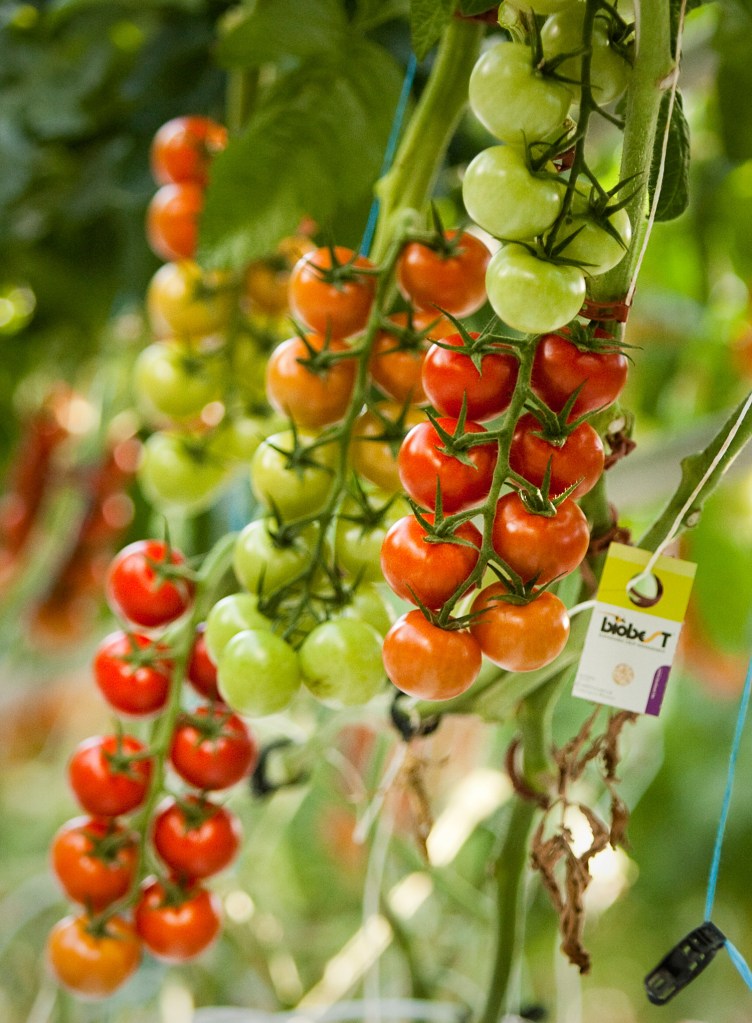
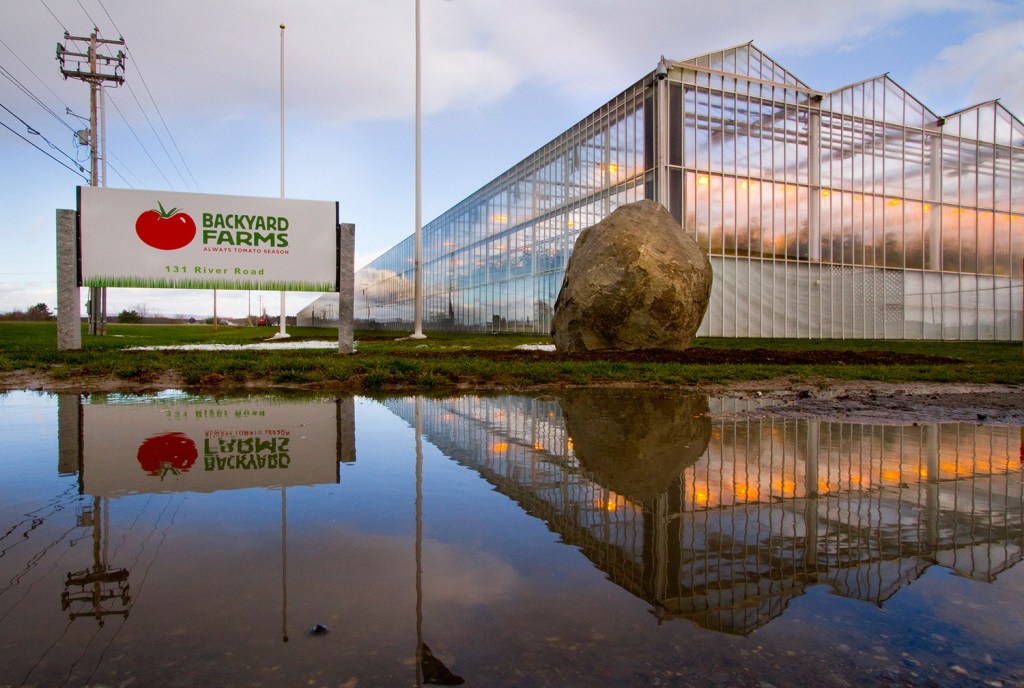
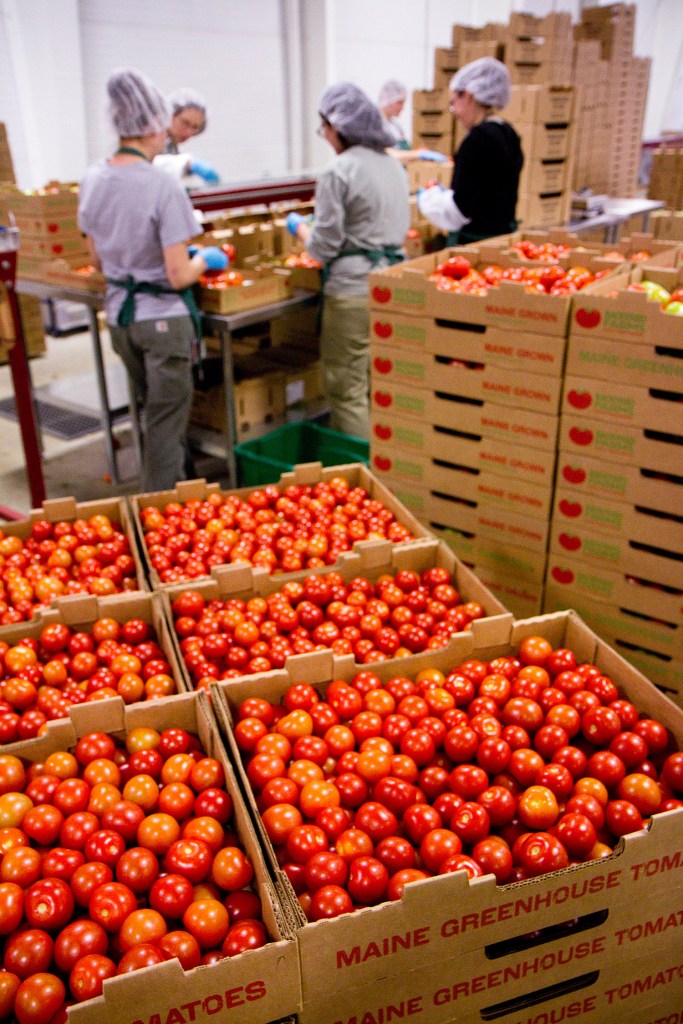
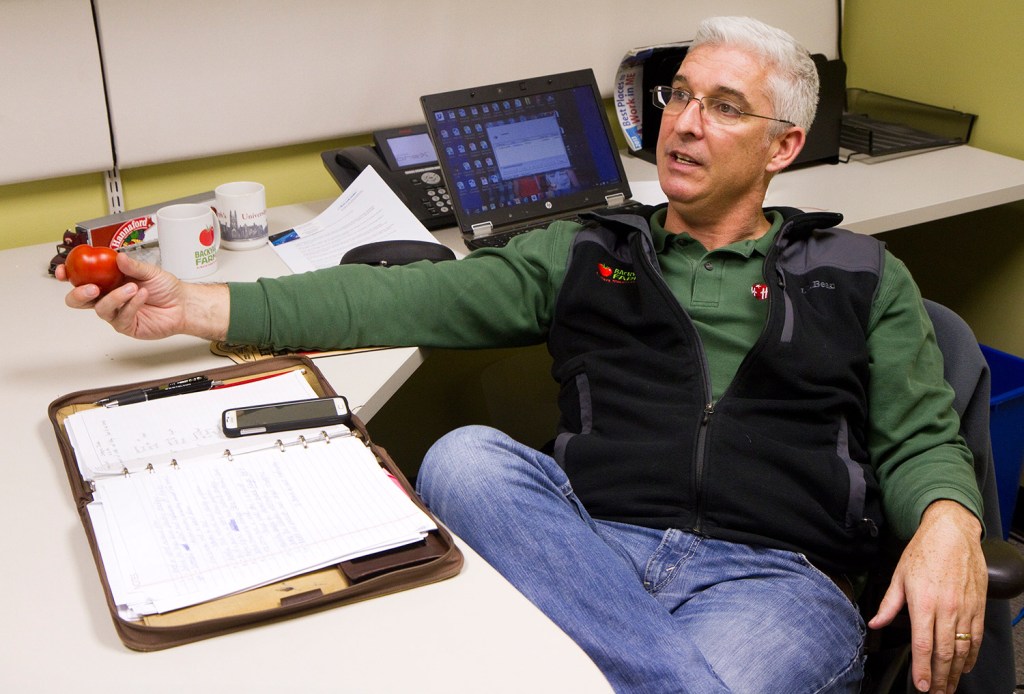
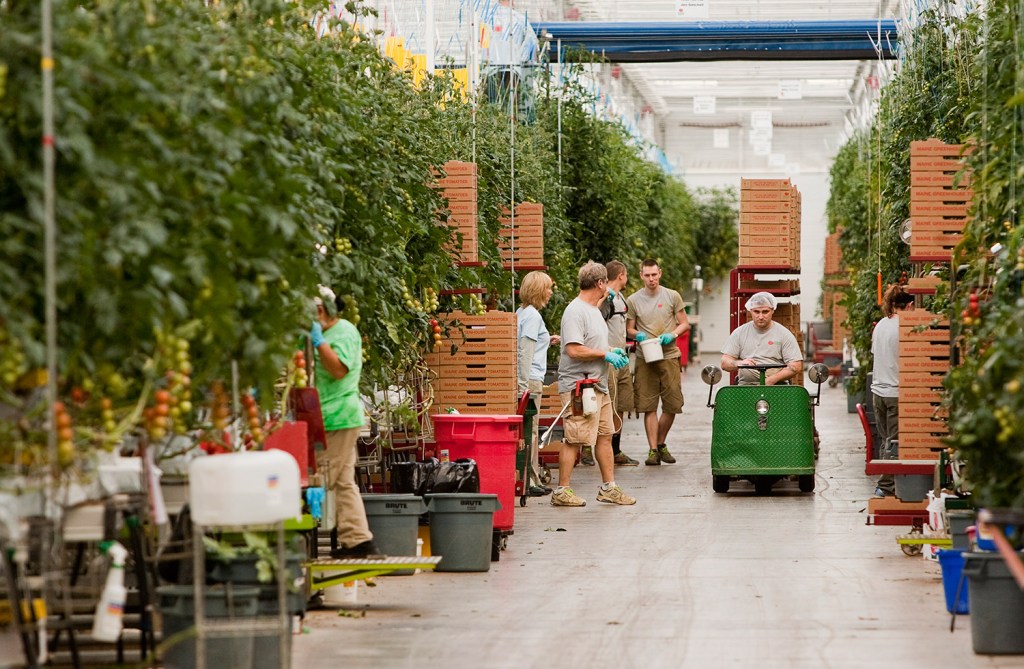

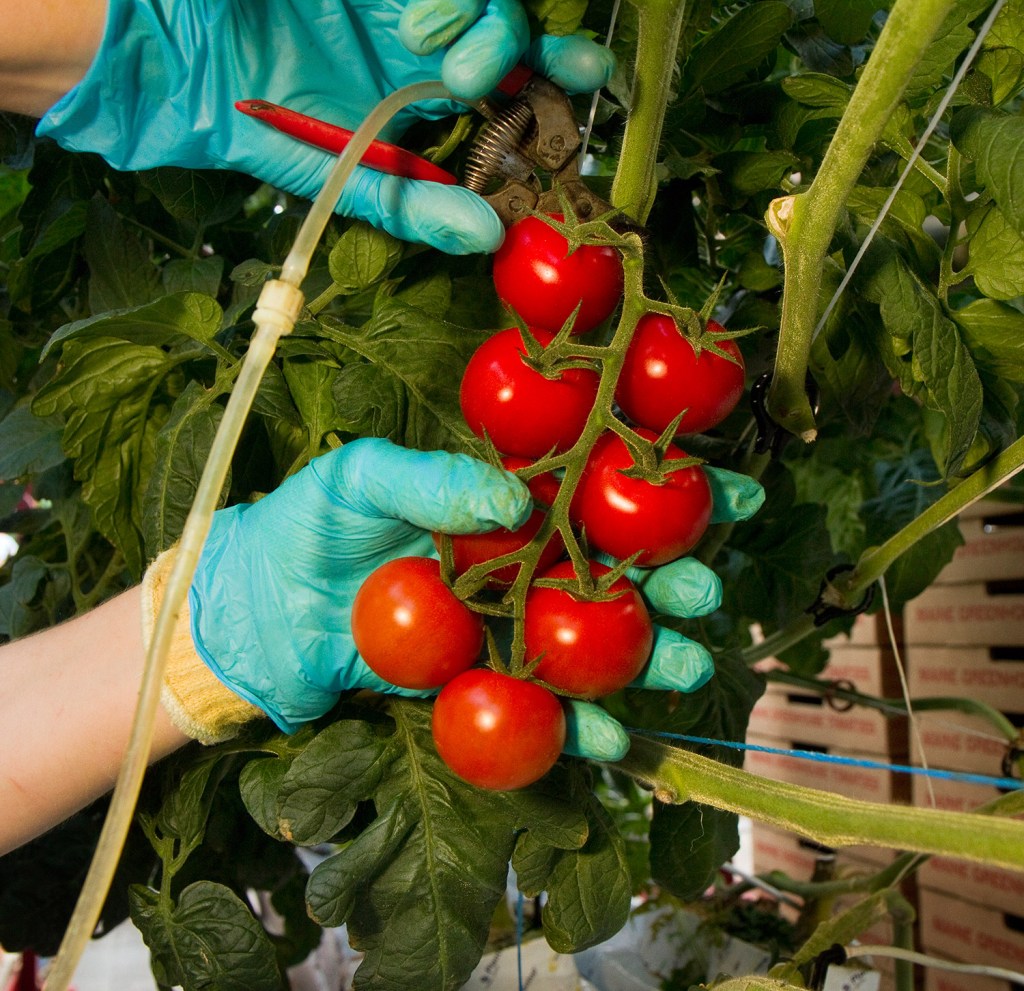
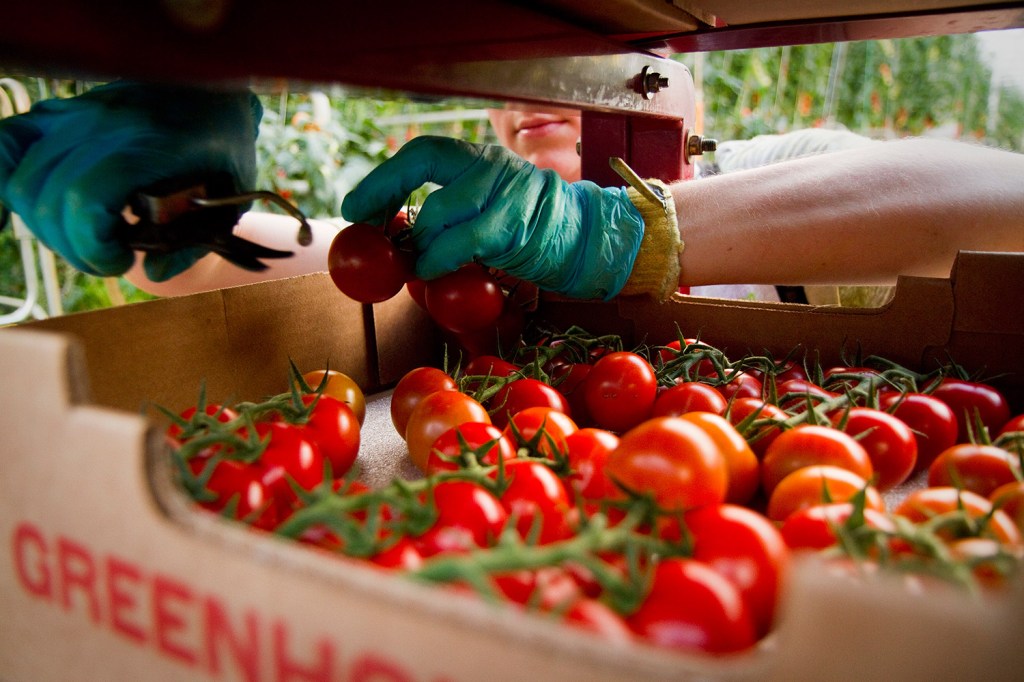
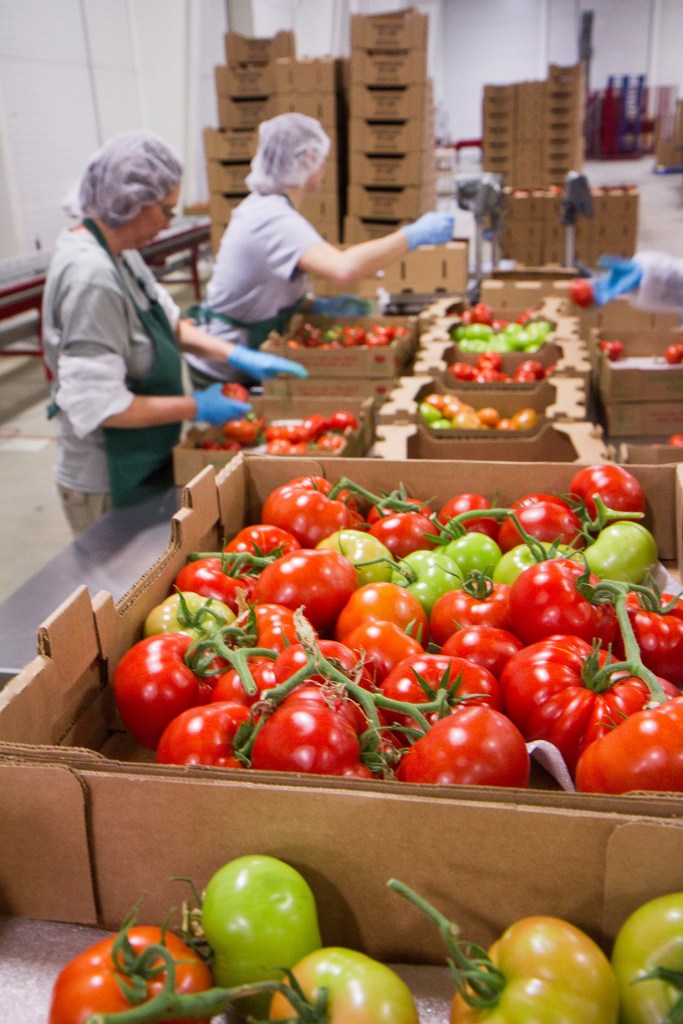
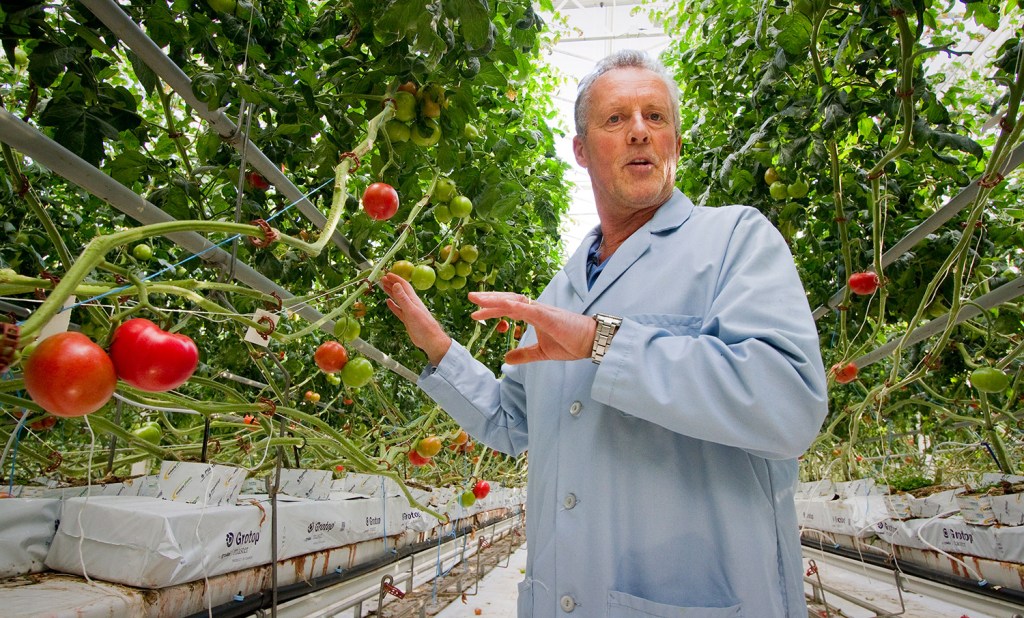
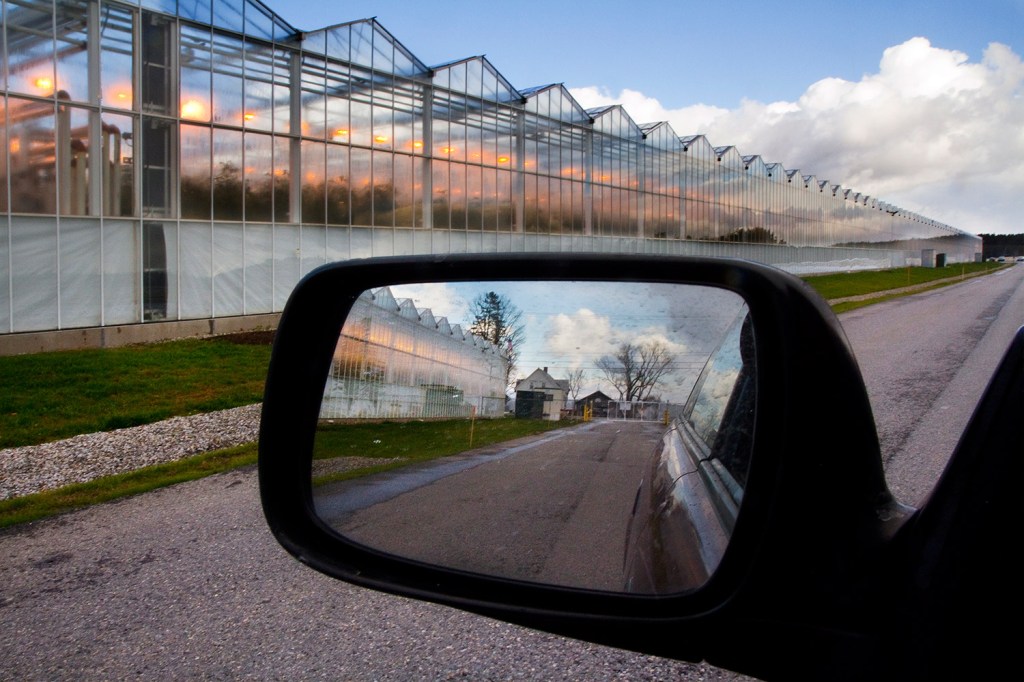
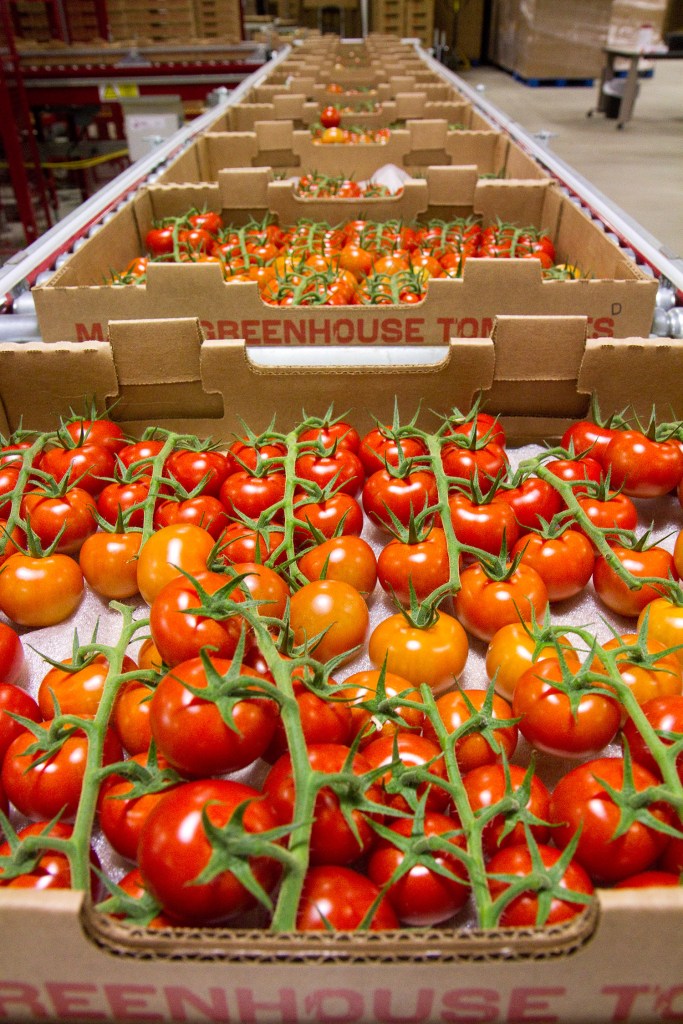

Success. Please wait for the page to reload. If the page does not reload within 5 seconds, please refresh the page.
Enter your email and password to access comments.
Hi, to comment on stories you must . This profile is in addition to your subscription and website login.
Already have a commenting profile? .
Invalid username/password.
Please check your email to confirm and complete your registration.
Only subscribers are eligible to post comments. Please subscribe or login first for digital access. Here’s why.
Use the form below to reset your password. When you've submitted your account email, we will send an email with a reset code.